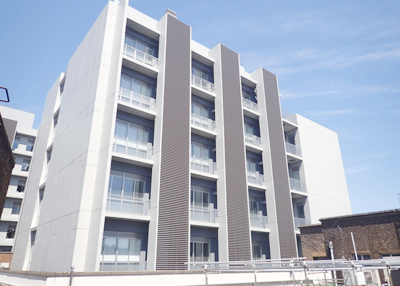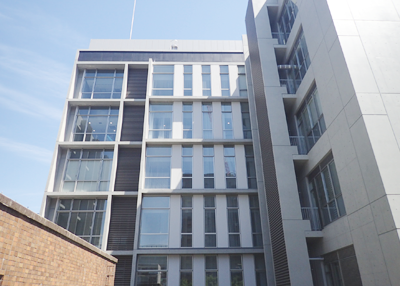Goal to be achieved at the end of the research and development stage
Ⅰ. Standardization of Health and Medical ICT
Currently, each medical institution adopts a different system of electronic medical record (EHR). By storing these medical data in the SS-MIX2 standard storage system, a platform for data utilization that does not rely on any specific database system can be established. This COI Site will coordinate with other Sites to propel standardization on a nationwide scale, to enable utilization in various clinical studies and cohort studies. The data utilization platform developed in the COI will be extended to be used for data from medical checkups outside of medical institutions and complete medical checkups, measurements at home, dispensing records, information on personal drug administration and daily life. Personal genome data will be managed separately in a different database, but in the end, all the data will be integrated to establish a system that enables prediction of changes in personal health or medical condition from medical and health data, and real time intervention.
In phase 1, the data utilization platform will be established, and in phase 2, it will begin to connect with living information, and also integrate with health information which device manufactures have.
"Standardization of health and medical ICT" is required platform to create a new health and medical industries, and when we built systems such as "visualization of health risk" and "disease prevention measures," which we strongly focuses on, it realize efficient development and cost savings. In phase 1, we established the "Prevention and ME-BYO Innovation Group," developed an application called "MIMOSYS," which measures stress from the voice by verbal analysis of pathophysiology, and also started to collaborate with Kanagawa Prefecture on ME-BYO project. In phase 2, we will make this group growth and divide into two groups: "Visualization of Health Risk Group" and "Disease Prevention Measures Group," so that we dedicate to promote individuals’ behavioral change, which is the key to the social implementation of our R&D, from both sides of the health care and sick care.
Ⅱ. Visualization of Health Risk
To realize our concept "From outpatient care to home care, being healthy at home," it is important to build a system which enables us to manage prevention and ME-BYO by checking up and measuring own health status at home, and to make a society that each person can take behavioral changes with regarding health maintenance as a serious personal matter ("Jibungoto"). This is a next-generation health care service innovation and also a vision which this COI site should achieve in the future by coordinating with other sites. On the other hand, even if we develop excellent devices and applications, "Jibungoto2" will never be achieved unless our awareness leads to own behavioral changes.
Therefore, in phase 2, we use the health examination data, which they have not been utilized well so far, to develop a behavioral-change application which indicates future health risk prediction score visualized by imaging techniques.
Also continued from phase 1, we will develop an application utilizing the technology of verbal analysis of pathophysiology as a spontaneously / freely and accessible / non-invasive ME-BYO/disease prediction measure.
As for ultrasound diagnostic techniques, techniques which are related to detection of ME-BYO state, will be connected the social implementation in phase 2. In addition, we will establish the self-measurement / examination systems which detects preventive / ME-BYO biomarker with high-sensitivity by realizing safe, easy and secure blood sampling at home fully utilized Microfluidic technology. Those systems can be added on our risk prediction model from now on.
Ⅲ. Disease Prevention Measures
Risk prediction utilizing the health screening data is a statistical approach, in parallel, the preventive medical technologies using genomic analysis will be developed. For example, we proceed to develop the immunological disease prevention measures, and also advance other disease prevention measures based on whole-genome analysis in parallel way. For diabetes patients and that of preliminary group, we will build information space which allow people to receive the same services as in the hospital by utilizing ICT and also develop an application which lead to prevent serious condition and promote personal behavioral change. In addition, as for ultra-early detection of breast cancer with ultrasound technology, we support the venture launched in phase 1 to connect to the steadily social implementation and expand to other diseases.
Ⅳ. Medical Technology Innovation
To realize our concept "From hospitalization to outpatient care," we will focus on a radiation-free ultrasound technology because they are can be used in emergency site, clinics and at home safely and easily. We will strive to reduce patient burden, and to improve the QOL and home healthcare by development and social-implementation of the diagnostic, therapeutic and healthcare equipment. In addition, we will develop a “anytime, anywhere and anyone ultrasound technology,” which is patient/operator-independent technology giving us an ultrasound diagnosis with high accuracy at home. While focusing on those ultrasound technology, we also work on improvements in endoscopic techniques and the accuracy of surgery with image guided technology so as to build a medical system which anyone can get professional diagnosis and treatment anytime and anywhere. On the other hand, we also develop regenerative therapy without inpatient surgery but only with local injection-medication by utilizing tissue engineering and biomaterials/stem cell-integration. Therefore, we can change treatment for skeletal disorders and blood diseases into outpatient treatment.
Ⅴ. Establishment of an Open Innovation Center
Traditional industry-academia collaboration has been mostly academia-led joint research, often leading to mismatch of need and seed, decline in corporate commitment and setback on regulatory issues, resulting in low yield in social implementation. To eradicate this fundamental issue, the COI will establish an open innovation platform, centered on a simulated operating room in the Core Facility newly constructed in the hospital premises, where all stakeholders from industry, government, academia and private sector can join as equal members, and aim at a self-sustainable management. Drug Discovery Process Innovation that we had been tackling in FY2014 will be sustained in FY2016 as a platform for open innovation, focusing on controlled crystallization and flow precision synthesis as platform technologies.


